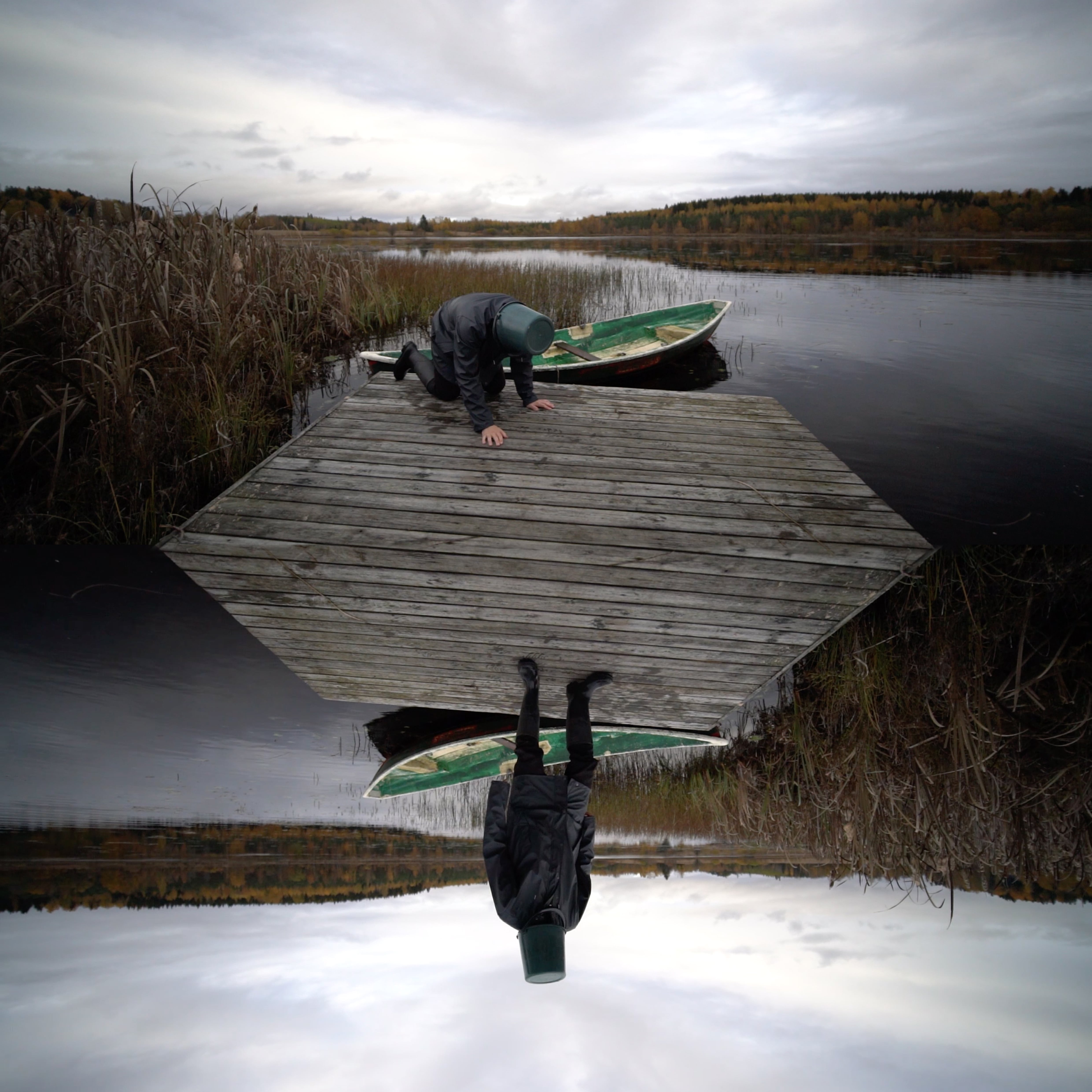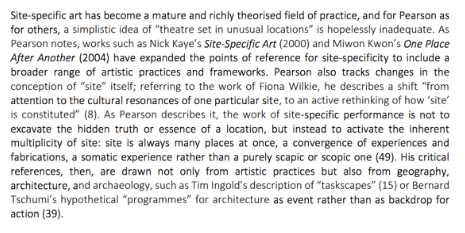
In response to the impacts of the current COVID-19 crisis on our community, KINGS Artist-Run and un Projects are collaborating with Bus Projects, TCB Art Inc. and SEVENTH to profile a range of artistic projects that have been impacted by the temporary closure of their physical spaces. By collaborating with these organisations to publish interviews, artist previews and texts, we seek to maintain the important dialogue generated by their rich programs and projects. Now as much as ever, artistic and cultural discourse is vital in keeping us connected and engaged.
This letter between artist Dale Collier and curator Beatrice Rubio-Gabriel is the second in a four-part series that will be published across the coming weeks. You can read the first one here.
I’m sorry for there being such a gap between this letter and yours. It has been somewhat of an overwhelming week. I’m very glad to hear that you’re happy to continue with this format! I think the personal is a big part of my own practice as an art writer, so it’s nice to have you along with me.
These days don’t seem to stop getting trickier, but I suppose all we can do is our best to look out for one another. I actually quite like this idea of ‘distance as a virtue’, though I suppose perhaps we may just be equipped with similar antisocial tendencies. Because though distance can be something that works and doesn’t work, I think in these times where we are so overwhelmed with everyone’s presence in the digital cacophony of information, being able to give one another breathing space can be one of the kindest things we can do. I’m quite interested to hear about the ideas you have around this – artwork/practice related or otherwise! (Is this the second question? I suppose it’s a rephrasing of ‘where do you see your practice heading at the moment?’)
I was very conscious of the fact that a growing document such as this doesn’t leave much room for self-censorship. I had this silly paranoid thought that you could go into the edit history and see just how much I’ve edited something. That you’ll be able to see the process of my over-thinking. Though I suppose it’s all a part of the process – I don’t mind so much anymore, being so uncensored here. If I ever see you redact something, I won’t ask why.
In regard to your show, I don’t actually have a copy of it, but I think I prefer to hear it from you firsthand anyway, as opposed to already having thoughts on the matter and then having you tell me about it. Those issues remain ever-present, but I wonder what will happen when the gallery opens back up and you will need to then proceed with it – how do you see yourself recontextualising your show? (If you decide to do so at all?)
Site-specificity is a strange one now. I’ve been working with some curators and we’ve been having talks about curating in context and localities and the relevancy of physical spaces. I think maybe site-specificity has evolved to include time as its own site – for example, the when we find ourselves situated in right now. But maybe this has already been said, I don’t know. I don’t know how it looks from where you’re standing, but institutional critique is steadily moving into institutions outside of the art world, too. Especially charged at a time like this, with the arts funding cuts from the government. But I think critique of the art institution which sits inside an economic structure that is within a social system ... I think we have always been critiquing that. We’re just a little more overt with it now. I also think art has never been more outside of its own sphere than in this moment in time. Not sure if these were the kind of thoughts you were asking for! I wonder what those terms mean for you.
Looking forward to hearing your thoughts and sending my best,
B
**
Thanks for writing to me again, this space and time between letterform feels good. Slows the pace of the panic that we’re all going through at the moment. Wonder if we can stretch it another week or two; every other deadline seems to be evaporating as we speak.
I hope you’re doing okay. Hope the lockdown situation isn’t too isolating this time around.
Glad you like the idea, about the distance thing. I’m finding it a bit weird. I mean, the antisocial behavioural mode was always a conscious decision, a way to get grounded, find safety, self-reflect ... That’s no longer an entirely personal preference or choice right now, and it’s no longer so much about self-preservation as it is for the safety of others, pretty much civic duty, to physically disengage. To Stay At Home. What does this mean for you as an arts writer? And to what extent do you think it works? Or stops working? … Maybe we’re giving one another breathing space, maybe only as long as that space is restricted by a mask on a face, one that you can’t see smiling like you used to. Then again, look for the smile in the eyes.
I think distance is an incredibly warped concept right now. An almost invisible blunt force instrument that’s not being used consistently, not with efficacy in mind. On the one hand as the language of greater good, biosecurity, safety, compassion and reassurance, and on the other a slap across the face as the illusion of personal/political freedom unravels, punishment as preventive measure, extreme enactments of ill-gotten power. The more I think about it, the more divisive it becomes. Stay at home. Stay distant. Stay as subject, as expendable, for the not-so-soft power regime. In close ideological proximity to another knee on another neck. Far away from another long-range missile. With the added security of another couple hundred billion towards the threat of attack in the name of defense. Distance as virtue, as violence, as law, as complacency, or distance as organised disruption amidst chaos, collapse.
I’m not sure if I can see where my practice is heading from here. That’s not to sound defeatist or resigned; there’s a lot of work to do going forward, my practice is flawed. The context I used to interrogate as an experimental artist has shifted, and continues to escape me rapidly. Before this pandemic started to shape reality, I used to get hung-up on the distance between regional and relevant. But more and more recently I’ve been going back to the bush, making work on Country and engaging with my feet on the ground, with the issues I care about. The urge to be part of urban dynamisms and this global thing, it’s growing weak. Maybe that’s just a cop out though.
Please excuse my uncensored rant, even just the thought of editing at this point = labour. Words are hard work. And re-reading my own often leads to paranoia. Your letter flows, doesn’t read like you’ve been over-thinking. It’s funny how much energy we give in an attempt to accommodate one another’s worlds without knowing. Over-thinking. Holding. Breathe.
Breathe.
Easier said than done properly. Especially when working in/with the pinch of institutional contexts. I think that’s why experiments at SEVENTH appeal to me – there’s a certain level of flexibility, freedom and relatability, ‘cos it’s run by artists. They know how to organise and accommodate disruption. Quick to act. Like with this interview, like extended deadlines and expansive networks and formats for change. Not just a silo of business ops. So I’m glad the pretext to this doesn’t exist as a copy of a hacked proposal for a prospective exhibition in a space that might not have a fixed address in the future. I’m not sure if the recontextualising is up to me. The works I had outlined and the ideas that led to their making still feel real, but it’s hard to place. We’re living through this crazy polarising state/space in time, no longer being like we’re used to being. Art, politics, environment, institutions, whatever, all twisted up in global viral condition. What even is that? If the context is ‘change’, how do artists respond or create that. I dunno. Sorry. Rambling.
And yes. Time. And how do we go about marking time? For me, time, or now, feels like that burning impact that hits you in the face when you touch your nose too soon after applying hand sanitizer. Or that taste in your mouth that lingers while your eyes maintain a watery sting, and hundreds of thousands of hectares of bush rages ablaze beyond what we once situated as local. You’re totally right, art appears so much outside its own sphere right now, and I guess that varies depending on where you are. Or, what where you are feels like, in time. Artists are definitely taking action and making impact and forcing change. But at the same time, the art world is … still full of fear. Still spinning our own wheels. Still got our heads up our own arses trying to play conservator within systems that aren’t functioning properly. Maybe that’s just me though.
Again, apologies for the diatribe ... Eeek! Maybe I should’ve considered ongoing edits here.
Oh, I was just reading this too - Mike Pearson Site Specific Performance:
Thanks for writing. And thanks for talking to Diego about some more time here.
Hope to hear from you again soon,
Dale.
**
Dale Collier is an experimental new media artist whose practice interrogates identity, the aesthetics of soft power, hyper-objectivities and contemporary falsehoods in order to highlight the processes of global conditioning and ecological security. Collier's work has been exhibited within the Art Gallery Of South Australia’s Ramsay Art Prize (2019) and the Parliament Of New South Wales’ King & Wood Malleson Contemporary Aboriginal and Torres Strait Islander Art Award (2018).
Beatrice Rubio-Gabriel is an independent curator, writer and performance artist based in Naarm/Melbourne. Centring around a collaborative and experimental practice, she has curated projects that aim to challenge current curatorial and euro-centric modes of exhibiting, and experiments with writing as artform.

